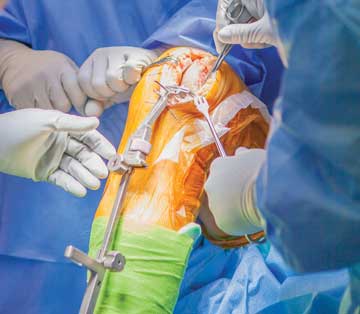Ambulatory surgery center payment rates as a percentage of the hospital outpatient department rates have steadily declined over the years. In 2003, procedures performed in an ASC setting cost Medicare 85% of the amount paid to HOPDs. That figure dropped to 55% in 2014 and today stands at 50%. It's important to note that ASC payments have not declined during this time. What has declined is, on average, the percentage of HOPD payments the ASC payments represent.
The No. 1 reason for the widening cost differentials? CMS uses separate inflationary measures to determine reimbursement rates for HOPDs and ASCs. For years, the Ambulatory Surgery Center Association (ASCA) has been asking Congress and CMS to update ASCs using the same inflation factors they used for HOPDs. And that finally happened this year — one of several recent successes in our efforts to level the reimbursement playing field between ASCs and hospitals.
1Same inflationary measures
Historically, CMS used an economic measure known as Consumer Price Index for All Urban Consumers (CPI-U) to update ASCs for inflation each year, but updated HOPDs using a different measure, the Hospital Market Basket. The differences between CPI-U and Hospital Market Basket are profound.
- CPI-U. A broad measure that looks at the things we buy — heating oil and home prices, milk and bread, for example — and has very little to do with health care.
- Hospital Market Basket. Looks at the costs of goods and services used in health care and reflects what the inflation in those have been.
As a result, most years — because medical inflation outpaces overall inflation — the gap between the inflationary rate that the hospitals received and what the ASCs got was getting larger and larger.
Besides ASCs falling further and further behind HOPDs, the fallout included hospitals buying the ASC down the street and flipping it into a hospital outpatient department so they could get the higher reimbursement rate. CMS has finally agreed to update ASCs using the same inflation factor. For the next 5 years, CMS will update ASCs using the Hospital Market Basket. As a result of that, ASCs this year received their largest inflationary increase — 2.1% — over the past decade.
Getting ASCs off the CPI-U is a great first step in terms of trying to decrease the payment disparities between surgery centers and other settings.
2Separate medical device payment
We also made some progress in Medicare's device-intensive threshold policy, which dictates when an ASC can be reimbursed for the cost of a medical device.
Previously, the cost of the device had to be 50% or more of the total cost of the procedure in the hospital outpatient setting in order for the ASC to get paid separately for the device. That was a huge burden.
For example, if the cost of the device used in a knee arthroscopy was 45% of the cost of the total procedure in the HOPD space, ASCs would not get reimbursed for the full cost of the device. That was a big disincentive to performing those procedures in an ASC. The ASC literally could not afford to do that procedure because the device cost ate up nearly the entire reimbursement of the procedure.
ASCA went to CMS a few years ago and asked them to address this. They agreed to move the device-intensive threshold down to 40%, and ASCs were able to do some device-intensive procedures for the first time.
This year, we got that threshold down to 30%, which opens up probably 100 or more different procedures that were previously cost-prohibitive. That means some of those device-intensive procedures that were stuck in the HOPD space because ASCs couldn't afford to provide them are now going to be able to migrate to ASCs.
.svg?sfvrsn=be606e78_3)

.svg?sfvrsn=56b2f850_5)